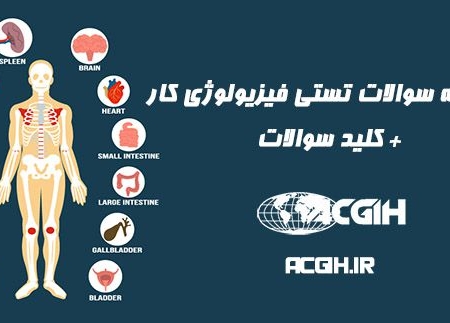توضیحات
جزوه ارگونومی در حمل دستی بار دکتر مظلومی
جزوه ارگونومی در حمل دستی بار دکتر مظلومی
فرمت: pdf تعداد صفحات: 62
یکی از جزوات نایاب در زمینه ارگونومی می باشد که به زبان اصلی می باشد که می توانید با هزینه اندک سفارش ترجمه آن را به تیم ACGIH ارسال کنید.
هدف:
- راه های متفاوت حمل دستی بار و روش های ارزیابی آنها
- آشنایی با مدل های بیومکانیک مختلف جهت ارزیابی مشکلات ناشی از حمل بار دستی
سرفصل ها:
- آنالیزهای بیومکانیک و ارگونومی
- مدل های بیومکانیک و حمل دستی بار
- مرور روش های متفاوت حمل دستی بار
- انتخاب روش های مناسب تر حمل دستی بار در صنعت
توضیحات بخشی از جزوه به صورت زیر است:
Anatomy, posture and body mechanics
Like any mechanical system, the body may be stable or unstable and is able to withstand a limited range of physical stresses.
Stresses may be imposed both internally or externally and may be acute or chronic.
Mechanical loading of the body:
i. Postural stress: is the mechanical load on the body. Posture is defined as the average orientation of the body parts over time.
ii. Task-stress: depends on the mechanical effort needed to perform the task.
Postural stress can cause pain.
Workers who have to work with the spine:
- Flexed forwards (by 60 degrees for more than 5% of the day or 30 degrees for more than 10% of the working day) or;
- Rotated (more than 30 degrees);
Suffer back pain (Hoogendoorn et al., 2000).
Risk factors for musculoskeletal disorders in the workplace
The main risk factors for musculoskeletal disorders can be categorised under one of four headings:
- Force
- Posture
- Repetition
- Duration of task
Biomechanics of spinal loading
The extensor muscles of the back play a major role in maintaining postural stability.
If the object weighed 30 kg, the back muscles would be required to exert a force equivalent to that generated by hanging a 300 kg weight!
Estimating spinal compression
A simple mechanical model can be used to estimate the spinal compression during static work. By definition, force is the product of mass and acceleration:
f = m × a
where m = mass of the object in kilograms, a = the acceleration in metres per second and f = the force in Newtons.
A mass of 1 kg resting on the Earth results in a force of
f = 1(kg) × 9.81(m/s2) = 9.81 N
متن کامل جزوه را بعد از پرداخت در حساب کاربری دانلود کنید.
حتما بخوانید:







